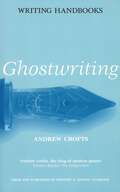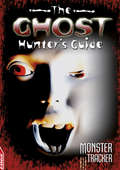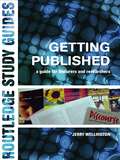- Table View
- List View
GHS label: explosive (UEB Contracted)
by RnibThis is a pictogram used on containers and workplace hazard warnings, meaning contents are explosive. It is from the Globally Harmonized System of Classification and Labelling of Chemicals (GHS), an international system, created by the United Nations. There is a locator dot shown, which will be at the top left of the page when the image is the correct way up. The label comprises of an exploding bomb in a red diamond. The bomb is shown as sphere that has exploded in the centre of the diamond. Lines extend out from the broken sphere representing the force of the detonation spreading out and there are small fragments that have been ejected from the bomb.
GHS label: explosive (UEB Uncontracted)
by RnibThis is a pictogram used on containers and workplace hazard warnings, meaning contents are explosive. It is from the Globally Harmonized System of Classification and Labelling of Chemicals (GHS), an international system, created by the United Nations. There is a locator dot shown, which will be at the top left of the page when the image is the correct way up. The label comprises of an exploding bomb in a red diamond. The bomb is shown as sphere that has exploded in the centre of the diamond. Lines extend out from the broken sphere representing the force of the detonation spreading out and there are small fragments that have been ejected from the bomb.
GHS label: flammable (Large Print)
by RnibThis is a pictogram used on containers and workplace hazard warnings, meaning contents are flammable. It is from the Globally Harmonized System of Classification and Labelling of Chemicals (GHS), an international system, created by the United Nations. There is a locator dot shown, which will be at the top left of the page when the image is the correct way up. The label comprises of an image of flames rising from a horizontal bar in a red diamond.
GHS label: flammable (UEB Contracted)
by RnibThis is a pictogram used on containers and workplace hazard warnings, meaning contents are flammable. It is from the Globally Harmonized System of Classification and Labelling of Chemicals (GHS), an international system, created by the United Nations. There is a locator dot shown, which will be at the top left of the page when the image is the correct way up. The label comprises of an image of flames rising from a horizontal bar in a red diamond.
GHS label: flammable (UEB Uncontracted)
by RnibThis is a pictogram used on containers and workplace hazard warnings, meaning contents are flammable. It is from the Globally Harmonized System of Classification and Labelling of Chemicals (GHS), an international system, created by the United Nations. There is a locator dot shown, which will be at the top left of the page when the image is the correct way up. The label comprises of an image of flames rising from a horizontal bar in a red diamond.
GHS label: harmful (Large Print)
by RnibThis is a pictogram, used on containers and workplace hazard warnings, meaning contents are harmful. It is from the Globally Harmonized System of Classification and Labelling of Chemicals (GHS), an international system, created by the United Nations. There is a locator dot shown, which will be at the top left of the page when the image is the correct way up. The label comprises of a black print exclamation mark character in a red diamond.
GHS label: harmful (UEB Contracted)
by RnibThis is a pictogram, used on containers and workplace hazard warnings, meaning contents are harmful. It is from the Globally Harmonized System of Classification and Labelling of Chemicals (GHS), an international system, created by the United Nations. There is a locator dot shown, which will be at the top left of the page when the image is the correct way up. The label comprises of a black print exclamation mark character in a red diamond.
GHS label: harmful (UEB Uncontracted)
by RnibThis is a pictogram, used on containers and workplace hazard warnings, meaning contents are harmful. It is from the Globally Harmonized System of Classification and Labelling of Chemicals (GHS), an international system, created by the United Nations. There is a locator dot shown, which will be at the top left of the page when the image is the correct way up. The label comprises of a black print exclamation mark character in a red diamond.
GHS label: hazardous to environment (Large Print)
by RnibThis is a pictogram used on containers and workplace hazard warnings, meaning contents are hazardous to the environment. It is from the Globally Harmonized System of Classification and Labelling of Chemicals (GHS), an international system, created by the United Nations. There is a locator dot shown, which will be at the top left of the page when the image is the correct way up. The label comprises of a dead tree and a dead fish in a red diamond. The tree has bare branches and is in the top left of the diamond. The fish is in the bottom right of the diamond. It is lying on its back with its tail to the left. There is a representation of a patch of land down the page.
GHS label: hazardous to environment (UEB Contracted)
by RnibThis is a pictogram used on containers and workplace hazard warnings, meaning contents are hazardous to the environment. It is from the Globally Harmonized System of Classification and Labelling of Chemicals (GHS), an international system, created by the United Nations. There is a locator dot shown, which will be at the top left of the page when the image is the correct way up. The label comprises of a dead tree and a dead fish in a red diamond. The tree has bare branches and is in the top left of the diamond. The fish is in the bottom right of the diamond. It is lying on its back with its tail to the left. There is a representation of a patch of land down the page.
GHS label: hazardous to environment (UEB Uncontracted)
by RnibThis is a pictogram used on containers and workplace hazard warnings, meaning contents are hazardous to the environment. It is from the Globally Harmonized System of Classification and Labelling of Chemicals (GHS), an international system, created by the United Nations. There is a locator dot shown, which will be at the top left of the page when the image is the correct way up. The label comprises of a dead tree and a dead fish in a red diamond. The tree has bare branches and is in the top left of the diamond. The fish is in the bottom right of the diamond. It is lying on its back with its tail to the left. There is a representation of a patch of land down the page.
GHS label: health hazard (Large Print)
by RnibThis is a pictogram, used on containers and workplace hazard warnings, meaning contents are a health hazard. It is from the Globally Harmonized System of Classification and Labelling of Chemicals (GHS), an international system, created by the United Nations. There is a locator dot shown, which will be at the top left of the page when the image is the correct way up. The label comprises of a person’s head and shoulders with a large six-pointed star shape on the chest and neck. This image is in a red diamond.
GHS label: health hazard (UEB Contracted)
by RnibThis is a pictogram, used on containers and workplace hazard warnings, meaning contents are a health hazard. It is from the Globally Harmonized System of Classification and Labelling of Chemicals (GHS), an international system, created by the United Nations. There is a locator dot shown, which will be at the top left of the page when the image is the correct way up. The label comprises of a person's head and shoulders with a large six-pointed star shape on the chest and neck. This image is in a red diamond.
GHS label: health hazard (UEB Uncontracted)
by RnibThis is a pictogram, used on containers and workplace hazard warnings, meaning contents are a health hazard. It is from the Globally Harmonized System of Classification and Labelling of Chemicals (GHS), an international system, created by the United Nations. There is a locator dot shown, which will be at the top left of the page when the image is the correct way up. The label comprises of a person's head and shoulders with a large six-pointed star shape on the chest and neck. This image is in a red diamond.
GHS label: oxidising (UEB Contracted)
by RnibThis is a pictogram used on containers and workplace hazard warnings, meaning contents are oxidising. It is from the Globally Harmonized System of Classification and Labelling of Chemicals (GHS), an international system, created by the United Nations. There is a locator dot shown, which will be at the top left of the page when the image is the correct way up. The label comprises of a flaming 'O' on a horizontal bar. This image is inside a red diamond.
GHS label: oxidising (UEB Uncontracted)
by RnibThis is a pictogram used on containers and workplace hazard warnings, meaning contents are oxidising. It is from the Globally Harmonized System of Classification and Labelling of Chemicals (GHS), an international system, created by the United Nations. There is a locator dot shown, which will be at the top left of the page when the image is the correct way up. The label comprises of a flaming 'O' on a horizontal bar. This image is inside a red diamond.
GHS label: oxidising (Large Print)
by RnibThis is a pictogram used on containers and workplace hazard warnings, meaning contents are oxidising. It is from the Globally Harmonized System of Classification and Labelling of Chemicals (GHS), an international system, created by the United Nations. There is a locator dot shown, which will be at the top left of the page when the image is the correct way up. The label comprises of a flaming ‘O' on a horizontal bar. This image is inside a red diamond.
GHS label: pressurised gasses (UEB Contracted)
by RnibThis is a pictogram used on containers and workplace hazard warnings, meaning contents are pressurised gasses. It is from the Globally Harmonized System of Classification and Labelling of Chemicals (GHS), an international system, created by the United Nations.. There is a locator dot shown, which will be at the top left of the page when the image is the correct way up. The label comprises of a silhouette of a gas cylinder inside a red diamond. The cylinder points diagonally right with its outlet valve at the right.
GHS label: pressurised gasses (UEB Uncontracted)
by RnibThis is a pictogram used on containers and workplace hazard warnings, meaning contents are pressurised gasses. It is from the Globally Harmonized System of Classification and Labelling of Chemicals (GHS), an international system, created by the United Nations.. There is a locator dot shown, which will be at the top left of the page when the image is the correct way up. The label comprises of a silhouette of a gas cylinder inside a red diamond. The cylinder points diagonally right with its outlet valve at the right.
GHS label: pressurised gasses (Large Print)
by RnibThis is a pictogram used on containers and workplace hazard warnings, meaning contents are pressurised gasses. It is from the Globally Harmonized System of Classification and Labelling of Chemicals (GHS), an international system, created by the United Nations.. There is a locator dot shown, which will be at the top left of the page when the image is the correct way up. The label comprises of a silhouette of a gas cylinder inside a red diamond. The cylinder points diagonally right with its outlet valve at the right.
Ghostwriting (Writing Handbooks #36)
by Andrew CroftsGhostwriting is a thriving, secretive industry. As a ghostwriter you can create best-selling books for film stars, footballers, pop singers, presidents, business tycoons, gangsters, gurus, spies, mercenaries, courtesans, four-star generals, royals and anyone else with an interesting story to tell. This book reveals all the essential secrets of how to turn ghostwriting into a successful and lucrative career. Andrew Crofts has ghosted more than forty books, many of them international bestsellers, including Sold by Zana Muhsen (nearly 4 million copies sold), The Kid by Kevin Lewis, Heroine of the Desert by Donya Al-Nahi, Kathy and Me by Gillian Taylforth and Crocodile Shoes by Jimmy Nail.
The Ghost Hunter's Guide (EDGE: Monster Tracker #3)
by Charles BouvierOver thousands of year, tales of creatures lurking in the night have haunted people's dreams. Arm yourself against the spirits of the night with the Ghost Hunter's Guide.A fantastically visual series of books, the Monster Tracker's Guides will chill as well as entertain.
Getting Published in Academic Journals: Navigating the Publication Process
by Brian Richard Paltridge Sue StarfieldThe pressure on graduate students and new PhDs to publish their work continues to grow with writing and publishing considered an important measure of career success within the academy. There is, however, more to the process of getting published than those who are new to the process initially realize. The aim of this guide is to clarify the process and offer advice. Getting Published in Academic Journals is written for graduate students and newly graduated PhDs who want to publish their research in peer-reviewed academic journals. Getting Published in Academic Journals draws on the experiences of the authors’ as editors of peer-reviewed journals, as teachers of writing-for-publication courses and workshops, as researchers of the scholarly publication process, as reviewers of hundreds of articles, and as published authors. The book is written to be used in courses and workshops on publishing, as a supplement to the books in the revised and updated English in Today’s Research World (Swales & Feak) series, and as a stand-alone guide for academic writers working by themselves.
Getting Published: A Guide for Lecturers and Researchers
by Jerry WellingtonThis handy guide for new and practising lecturers and researchers takes a rare insider's look at the activities of writing and publishing. Turning the spotlight inwards, it examines how and why professionals communicate with each other through writing and publishing.Written with great verve and pace, the author succeeds in providing sensible advice bolstered by many illustrative examples, case studies and anecdotes. For the academic needing insight into the serious business of getting published, this book will provide answers to many of their frequent questions:* Why do they write and publish?* Who are they writing for?* What channels of communication are available for their writing?* Who 'controls' these channels?* How can they successfully submit articles and papers to journals and newspapers, contribute chapters to books, or approach publishers with book proposals?Developed from a series of seminars on the subject by the author, this book will be an enjoyable and informative guide to anyone with an interest in getting their work published.
Getting Published: A Guide for Lecturers and Researchers
by Jerry WellingtonThis handy guide for new and practising lecturers and researchers takes a rare insider's look at the activities of writing and publishing. Turning the spotlight inwards, it examines how and why professionals communicate with each other through writing and publishing.Written with great verve and pace, the author succeeds in providing sensible advice bolstered by many illustrative examples, case studies and anecdotes. For the academic needing insight into the serious business of getting published, this book will provide answers to many of their frequent questions:* Why do they write and publish?* Who are they writing for?* What channels of communication are available for their writing?* Who 'controls' these channels?* How can they successfully submit articles and papers to journals and newspapers, contribute chapters to books, or approach publishers with book proposals?Developed from a series of seminars on the subject by the author, this book will be an enjoyable and informative guide to anyone with an interest in getting their work published.




